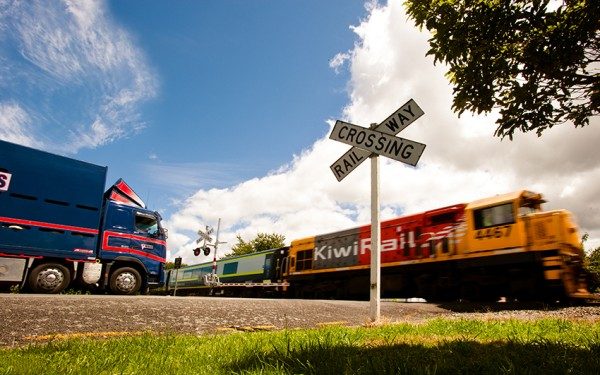
The NZ Transport Agency and KiwiRail are looking at ways to identify New Zealand‘s busiest level crossings and see how they can be made safer and more efficient. The two organisations are taking a new approach by recognising that level crossing safety is a shared challenge between the two modes of transport.
“When it comes to the movement of freight, which is the lifeblood of our economy, safety and efficiency go hand in hand,” said NZTA freight portfolio director David Silvester.
“By working closely with KiwiRail we are developing a ‘one network‘ approach that will help us improve the performance of both road and rail.”
Research undertaken in late 2014 indicated that local drivers in rural areas are often complacent, especially around those level crossings controlled by Stop and Give Way signs. They often don‘t perceive the risk of rural crossings to be high, and this complacency can lead to risky behaviour like failing to carefully look for trains before proceeding over a level crossing.
‘Always expect trains‘ is a project launched in conjunction with the police, local government and TrackSAFE. It features a locomotive-sized billboard and associated signage being placed near and in the approach to rural level crossings in the lower North Island. The aim is to get local drivers off autopilot when they approach railway tracks and to accept that crossing railway tracks safely means giving it their full attention.
The first site for the signage was at a rural level crossing in Carterton, followed by a level crossing in Waipukurau. The billboard was recently installed at the Union Line level crossing just out of Marton. Data on traffic movements and incidents at level crossings is also being analysed, to identify crossings on the state highway network that are of a high priority. Once this is complete the top 10 will be targeted and options identified for improving safety and efficiency.





